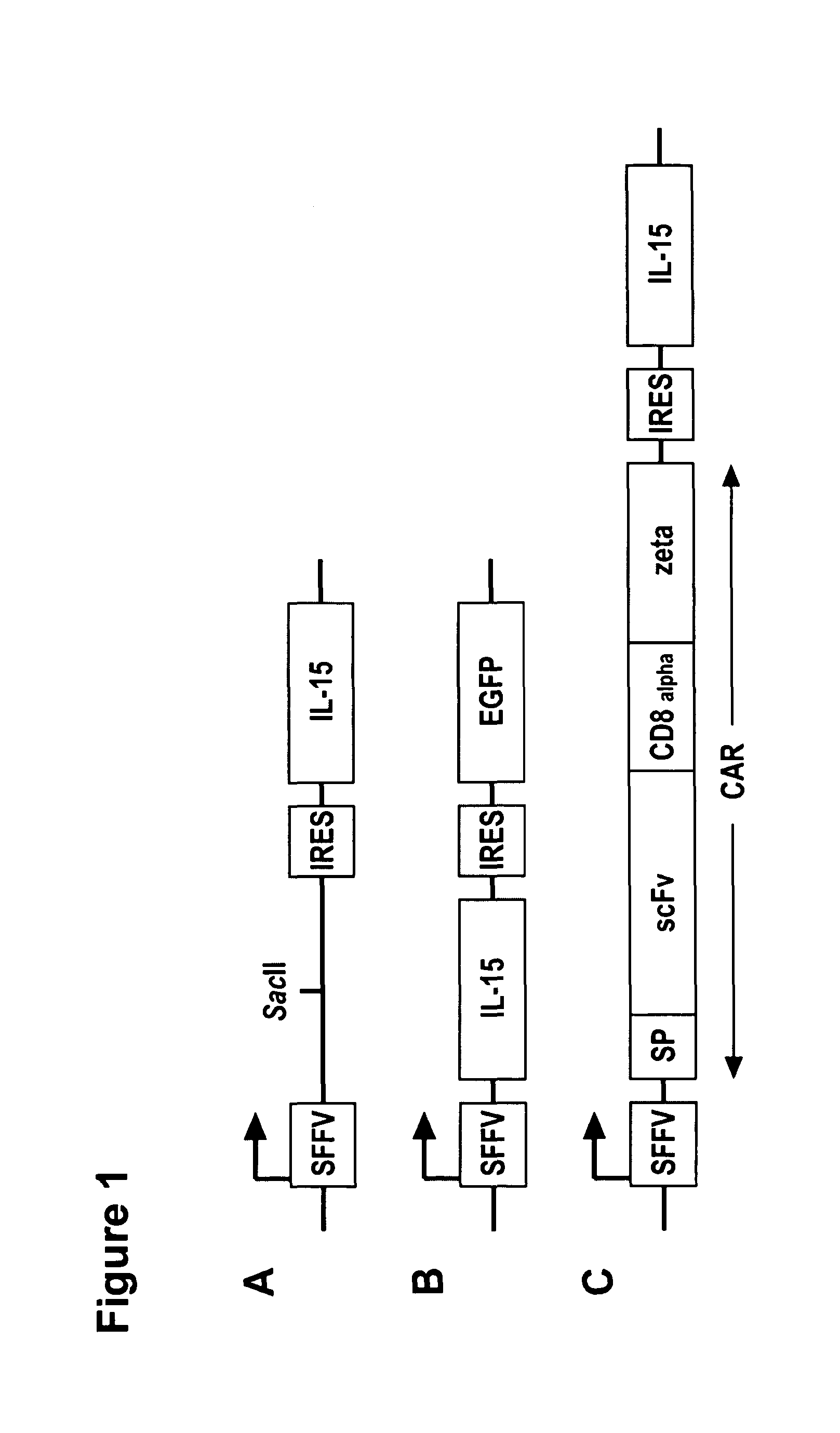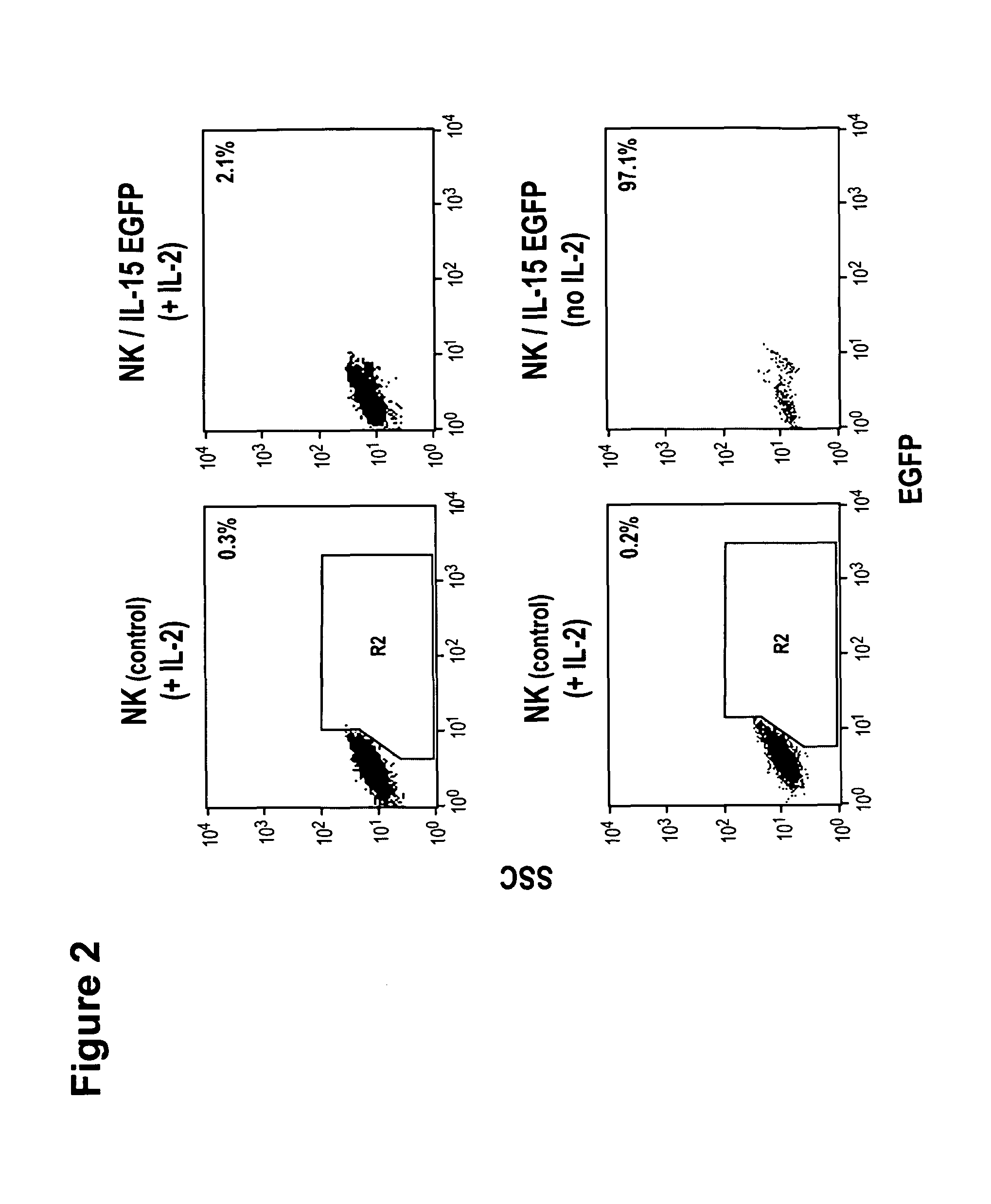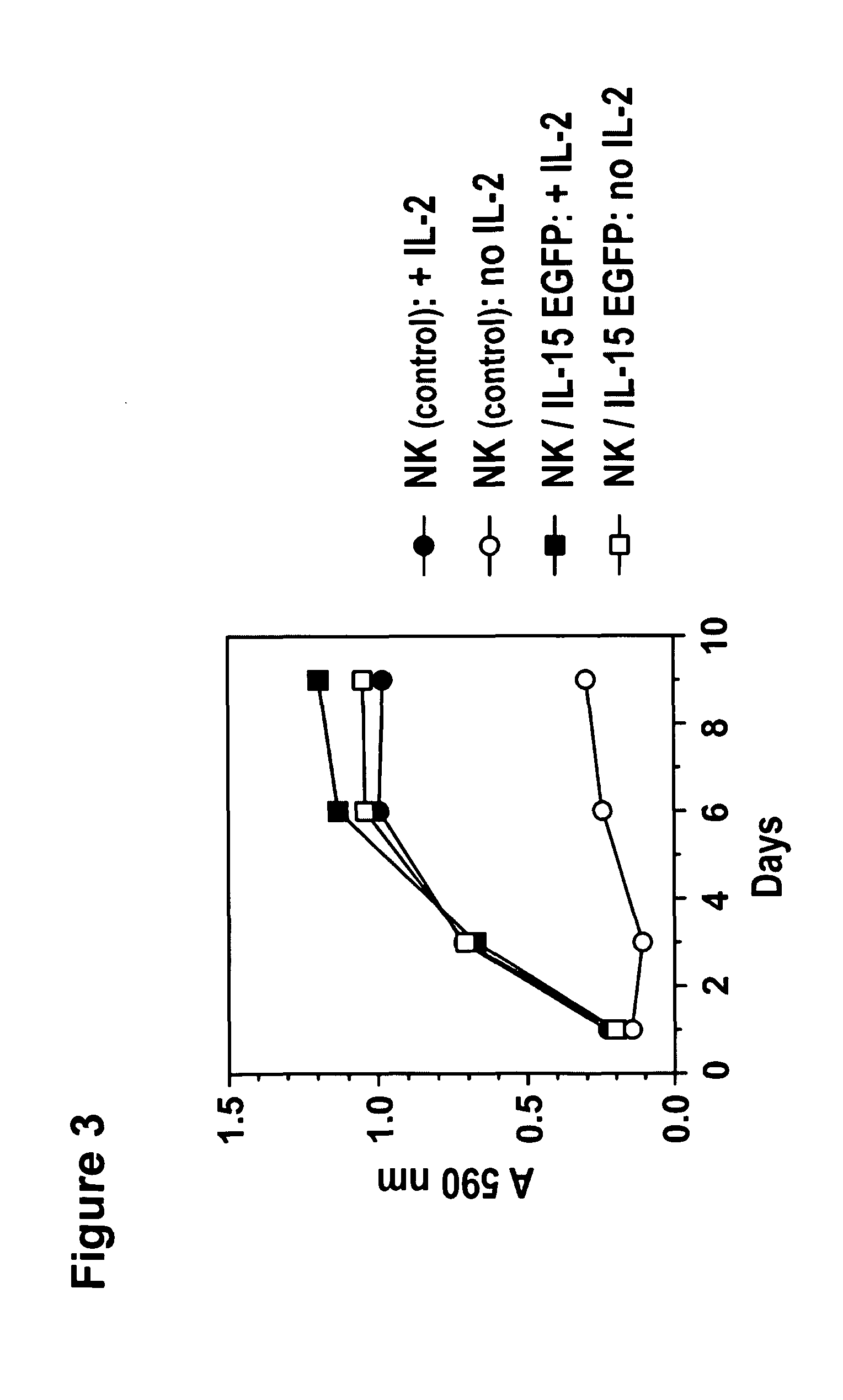Interleukin 15 as Selectable Marker for Gene Transfer in Lymphocytes
a lymphocyte and selectable marker technology, applied in the direction of fusion polypeptide, cell receptor/surface-antigen/surface-determinants, botany apparatus and processes, etc., can solve the problems of unresponsiveness and clonal anergy, limited efficiency of gene transfer using viral vectors or physical transfection methods, and relatively low transduction efficiency of viral vectors employed
- Summary
- Abstract
- Description
- Claims
- Application Information
AI Technical Summary
Benefits of technology
Problems solved by technology
Method used
Image
Examples
example 1
Materials and Methods (of Example 1)
[0170]Cells and Culture Conditions.
[0171]Human NK cells were maintained in X-VIVO10 medium supplemented with 5% human plasma and 100 IU / mL IL-2. IL-15 expressing NK cells were cultured in X-VIVO10 medium supplemented with 5% human plasma in the absence of exogenous cytokines. Murine CTL were maintained in RPMI 1640 medium supplemented with 10% fetal bovine serum, 2 mM L-glutamine, 100 U / mL penicillin, 100 μg / ml streptomycin, 50 μM β-mercaptoethanol and 50 IU / mL IL-2. IL-15 expressing CTL were cultured in the same medium in the absence of exogenous cytokines.
[0172]Construction of IL-15 Expression Vector.
[0173]The lentiviral transfer vector SIEW was used as basis for the construction of different IL-15 encoding vectors for expression in lymphocytes. Two types of bicistronic lentiviral transfer vectors were constructed that employ IL-15 as a selectable marker. First, IL-15 cDNA was inserted into the SacII restriction site of SIEW resulting in a vecto...
PUM
| Property | Measurement | Unit |
|---|---|---|
| pharmaceutical composition | aaaaa | aaaaa |
| flexible | aaaaa | aaaaa |
| width | aaaaa | aaaaa |
Abstract
Description
Claims
Application Information
 Login to View More
Login to View More - R&D
- Intellectual Property
- Life Sciences
- Materials
- Tech Scout
- Unparalleled Data Quality
- Higher Quality Content
- 60% Fewer Hallucinations
Browse by: Latest US Patents, China's latest patents, Technical Efficacy Thesaurus, Application Domain, Technology Topic, Popular Technical Reports.
© 2025 PatSnap. All rights reserved.Legal|Privacy policy|Modern Slavery Act Transparency Statement|Sitemap|About US| Contact US: help@patsnap.com



